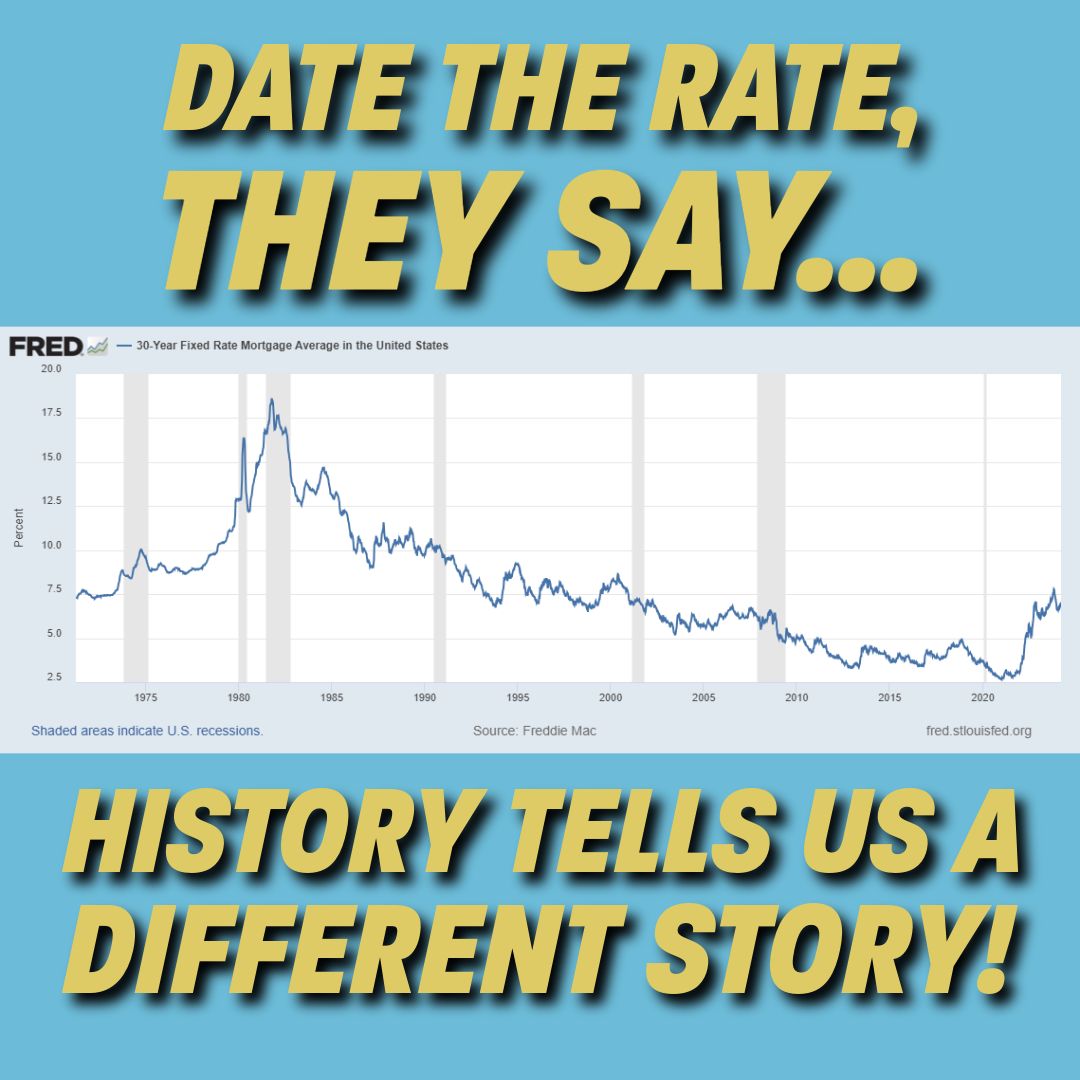
Before you or a loved one dives into a refinance, ask these critical questions:
▶ What will my new monthly payment be compared to my current one?
▶ How does my current loan payoff amount stack up against the new loan amount?
▶ What’s the break-even period? (Hint: It’s crucial to weigh closing costs and your new loan amount against monthly savings.)
▶ How long will it take to get back to paying what I presently am towards my principle balance each month, and am I prepared to reset my loan term to 30 years?
The allure of “date the rate, marry the house” or “you can refinance when rates go down” narratives may seem enticing, but they’re faulty assumptions you don’t want to risk your financial future on.
As someone who’s had mortgages for over two decades now, refinancing has only made financial sense for me ONCE. In 20 years. One time. Yes, it happened during the pandemic when the federal government was offering unprecedented financial relief. But that was a rare anomaly, not the norm.
In 2018, we purchased our home with a 4.5% fixed rate. Fast forward to 2020, amidst the chaos, we took advantage and refinanced to a 2.75% fixed rate. This decision wasn’t made lightly. Having been a mortgage loan underwriter in 2006, amidst the height of reckless mortgage lending practices, I had front row seats to the financial details of refinances that were not in the best interest of borrowers. This is what sits at the heart of what I’m trying to convey to you.
💡Here’s the truth: Refinancing DOES NOT ALWAYS MAKE financial sense.💡
Your situation, not the market, should dictate whether refinancing is the right move for you. If buying your dream home means accepting a higher interest rate, go for it — but do so with the understanding that refinancing might not be a viable solution down the road. I didn’t plan on refinancing when we bought our dream home back in 2018.
Before you or a loved one dives into a refinance, ask these critical questions:
▶ What will my new monthly payment be compared to my current one?
▶ How does my current loan payoff amount stack up against the new loan amount?
▶ What’s the break-even period? (Hint: It’s crucial to weigh closing costs and your new loan amount against monthly savings.)
▶ How long will it take to get back to paying what I presently am towards my principle balance each month, and am I prepared to reset my loan term to 30 years?
🔆 Pro tip: Consider making one extra mortgage payment each year to chip away at your principal balance and shorten your 30-year loan term by about 4 to 5 years on average. Most banks will setup an auto draft for bi-weekly payments, essentially achieving the same effect with less effort. I prefer this method for the automation aspect. Automating financial goals when you can is a huge help!
There are more reasons to refinance then simply lowering your rate; this is just the scenario I’m focusing on today because, well…it comes up in conversations A LOT lately. 🙃 I would love to hear your thoughts or experiences with refinancing in the comments below, or feel free to contact me directly.
CriticalThinking
ChangeTheNarrative
RefinancingIsNotForEveryone